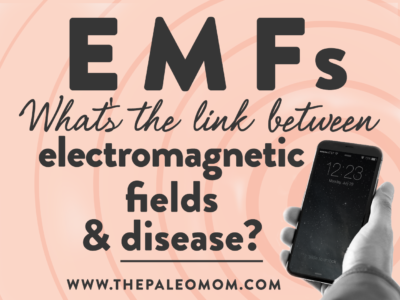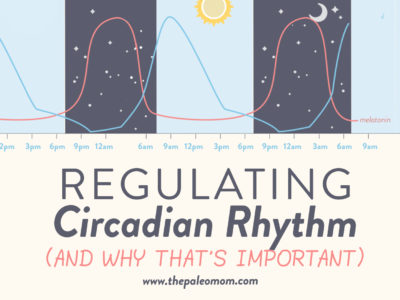 Out of all the environmental exposures we might have to worry about, EMFs (electromagnetic fields) are among the most controversial!
Out of all the environmental exposures we might have to worry about, EMFs (electromagnetic fields) are among the most controversial!
Table of Contents[Hide][Show]
EMFs are a form of radiation emitted from cell phones, electronics, power lines, and other man-made (as well as naturally occurring) objects. In recent years, many articles have come out claiming that EMFs can cause cancer, endocrine disruption, sleep disturbances, sperm mutations, behavioral problems, and other health conditions. You may have seen products being sold to help reduce EMF exposure (like EMF shields), heard advice to limit cell phone use, and read stern warnings about keeping electronics out of your bedroom. And that raises the question… are these EMF fears really justified?
Part of the confusion comes from inconsistency within the scientific literature. We actually have a huge body of studies looking at EMF exposure in animals and humans, children and adults, and across various lengths of time and levels of emission, and the conclusions still aren’t totally clear due to weak statistics and contradictory findings. But, we do know enough at this point to bust some pervasive myths and provide strategies for staying healthy. Let’s take a look at the science to figure out what’s worth worrying about and what isn’t!
Save 80% Off the Foundations of Health
Expand your health knowledge on a wide range of topics relevant to you, from how to evaluate scientific studies, to therapeutic diet and lifestyle, to leaky gut and gut microbiome health, to sustainable weight loss, and much more!!!

What Are EMFs, and Where Do They Come From?
First, let’s make sure we understand what EMFs actually are! From a technical standpoint, EMFs are physical fields created by the motion of electrically charged objects. (The electric charge is what creates the electric field, and the motion of that charge is what creates the magnetic field.)
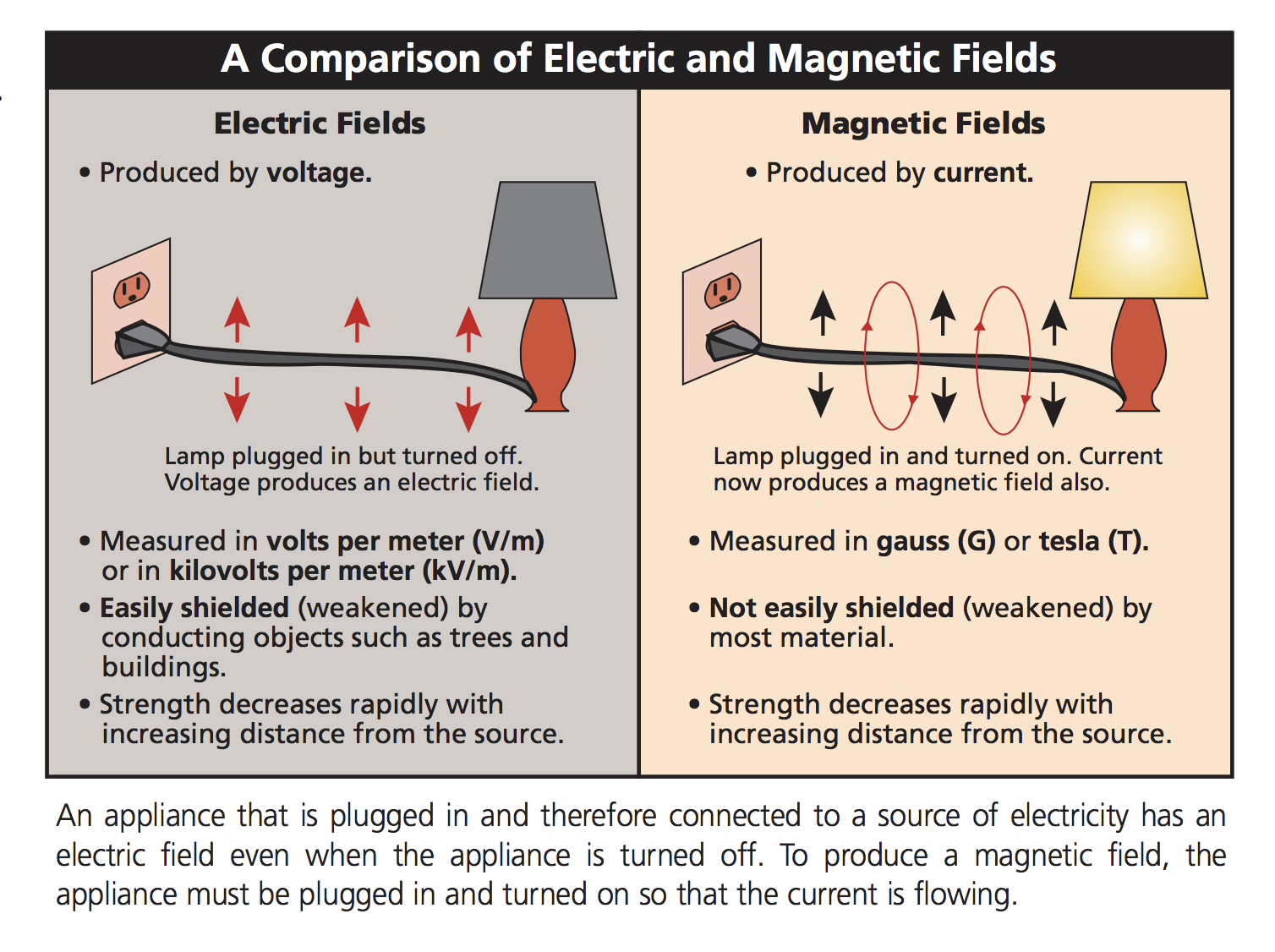
The full electromagnetic spectrum is vast, encompassing both natural and manmade forms of radiation and extending from extremely low frequencies (like power lines, at 50-60 Hz) to extremely high frequencies (like cancer treatment radiation, at 500-5,000 EHz). Mobile phones, microwave ovens, visible light, and diagnostic X-rays all produce radiation on the EMF spectrum! (For more information on microwave ovens in particular—another hot topic!—see, “Are Microwaves Safe to Use?”)
In all cases, EMF levels are highest near the source of emission and decrease very rapidly the farther away we move from that source.
 Likewise, EMFs can be either ionizing (carrying enough energy to liberate electrons, thus ionizing the atoms those electrons were orbiting) or non-ionizing (not carrying enough energy to liberate electrons). Ionizing EMFs include X-rays and gamma rays, while non-ionizing EMFs include UV light, visible light, infrared light, microwave light, radio frequency, and various electronics.
Likewise, EMFs can be either ionizing (carrying enough energy to liberate electrons, thus ionizing the atoms those electrons were orbiting) or non-ionizing (not carrying enough energy to liberate electrons). Ionizing EMFs include X-rays and gamma rays, while non-ionizing EMFs include UV light, visible light, infrared light, microwave light, radio frequency, and various electronics.
It’s well established that ionizing EMFs can cause damage to tissue and DNA, but we won’t be looking at these higher frequencies in this post! The modern concern is about low-frequency, non-ionizing EMFs, which, unlike deliberately going to the doctor for an X-ray, are ubiquitous in modern life and expose us without us being aware.
It’s also important to keep in mind that the natural world (including the earth, the sun, and our own bodies!) produces low levels of EMFs. The earth’s magnetic field is a source of EMFs, as are the electric fields produced by our nervous and cardiovascular systems. At no time in human history have we not been exposed to EMFs to some degree! Consequently, no one is suggesting that these naturally occurring levels are harmful or that they contribute to chronic health conditions. It’s the relatively recent additions to our environment of “power-frequency” EMFs—electronics, appliances, cell phone towers, cell phones themselves, WiFi, transmission lines, and so forth—that have some people concerned.
What Do Official Organizations Say About EMFs?
Across the globe, various health organizations have released statements and policies on the safety of EMF exposure. These include:
The World Health Organization (WHO), via the International Agency for Research on Cancer (IARC), classifies EMFs as a Group 2B carcinogen: “possibly carcinogenic to humans.” That might sound scary, but it really only means that we haven’t been able to totally rule out EMFs as a carcinogen; the WHO acknowledges the potential for an increased risk of one type of rare cancer, glioma, from cell phones (more on that later!). Other items considered Group 2B carcinogens include aloe vera leaf extract, goldenseal root powder, and pickled vegetables!
The European Commission Scientific Committee on Emerging and Newly Identified Health Risks has identified a potential risk of childhood leukemia related to high EMF exposure (0.3 to 0.4 μT daily), with the caveat that we haven’t don’t have any mechanisms or experimental studies to support the validity of this link. Likewise, the commission found no evidence that EMFs cause brain cancers (although a possible link with benign acoustic neuromas is inconclusive).
Of course, many of us are skeptical about what “official organizations” have to say about health issues (after all, it was the USDA that gave us the grain-based Food Pyramid!). If we’re after the truth, it’s important to look directly at the research instead of what other people or institutions say about that research. So, with that in mind…
What Does the Research Say?
Here’s where things get tricky. Since the 1970s, an enormous body of research on EMFs has been produced. Most of this research has failed to show that EMF exposure in the extremely low frequency range (such as electronics) is associated with cancer or other diseases. But, the results of some animal studies, human studies, and mechanistic studies have been inconsistent and contradictory, making it hard to establish a consensus from the available science.
Even so, we can still get a sense of where the preponderance of evidence falls within the often-confusing research! Research on general EMF exposure has been mostly divided into either animal studies or human studies. Let’s take a look at what both categories have uncovered.
Animal EMF Studies
In animals, most studies have shown that EMFs in general, as well as specific forms of EMFs (like WiFi), don’t have any clear association with cancer.
One group of investigators seemed to find that EMFs caused DNA damage in rodent brain cells (at exposure to a 60 Hz magnetic field at 0.1-0.5 μT), but similar, more recent research failed to replicate those findings (using 50 Hz at 0.1-1.0 μT, no DNA damage was seen in brain, liver, or kidney cells). The more recent, large-scale, high quality animal studies (in contrast to earlier studies that were less carefully conducted) have generally failed to demonstrate any consistent cancer-causing potential of EMFs. One early study did find a possible increase in lymphomas in rats exposed to high-strength EMFs (25 μT) for three generations in a row, and another found an increase in chronic myeloid leukemia in rats exposed to even higher-strength EMFs (50 μT) for twelve hours per day for a week, but these levels are almost impossible to attain for the average human (estimates vary, but our daily exposure tends to be well under 0.2 μT plus we’re a little bit bigger than rats, meaning the equivalent cancer-causing dose for us would be something like 25,000X more than we get on average ).
The majority of rodent studies show a lack of toxicity from EMFs at biologically feasible levels (and in many cases, even at unrealistically high levels!). The largest set of animal tests conducted—an eight-year long, $10 million project called Perform-A, organized by the European Commission—didn’t find any evidence that EMFs from cell phones promoted cancer in rodents.
Another area of concern is the effect of EMFs on the endocrine system—in particular, because one of the only plausible mechanisms linking EMFs with adverse health outcomes involves melatonin (the theory goes that EMFs could suppress melatonin production and thereby enhance tumor growth, among other health issues). In animal models, some studies have shown that low-frequency EMFs can suppress pineal and serum melatonin levels in rats, but these findings are inconsistent. In other mammals, such as hamsters and sheep, EMF exposure doesn’t appear to significantly impact melatonin levels. And in nonhuman primates, researchers have failed to find a convincing effect of EMF exposure on melatonin levels.
Ironically, a few studies have actually shown a beneficial effect of EMFs on rodent health. In one experiment, exposing triple transgenic mice (destined to develop cognitive impairment similar to Alzheimer’s disease) to WiFi-type EMF signals for two hours per day, over the course of a month, resulted in an improvement in cognitive behavior!
It’s important to remember that animal studies can offer us clues, but they’re very different than what happens with humans in a real-world setting. Apart from obvious differences in biology (I’m assuming no one reading this is a Sprauge-Dawley rat!), animal studies generally use a single frequency or intensity of EMF exposure, whereas humans are exposed to a mixture of sources and intensities throughout the day. This can lead to significant differences in outcomes, and makes it impossible to generalize the results of animal studies to human beings. So, regardless of their findings, we should take animal studies with a grain of salt when it comes to EMF risks.
Human EMF Studies
In children, there’s been some concern that EMF exposure could raise the risk of certain cancers (especially childhood leukemia and brain tumors). The original fear started with a 1979 study that found a potential association between childhood leukemia and living near electric power lines. However, more recent studies have been inconsistent, with the majority finding either no association at all, or only an association for children living in homes with unusually high EMF levels. According to a recent pooled analysis of seven different studies, there may be an increased risk of childhood leukemia for children living with exposures of 0.3 μT or higher (less than 0.05% of children are exposed to these levels), but not all research supports this result.
Due to the widespread use of WiFi in classrooms, the UK Health Protection Agency has conducted studies to assess EMF exposure in schools from wireless computer networks, and found that EMF exposures are far below levels that could cause harm. And, despite rumors that living near cell phone base stations (or television or radio transmitters) can increase cancer risk, studies estimating exposures and tracking disease outcomes haven’t supported this belief!
The one area of research we might want to look more closely at is parental exposure to EMFs and subsequent cancer risk in their offspring. The results of these studies have been inconsistent, and most show no risk, but some suggest that children have an elevated risk of leukemia if their mother was exposed to very high occupational levels of EMFs during pregnancy (like being an x-ray technician). More research is needed before we can have a clear idea of where the evidence falls and the risk most likely doesn’t translate to the average person.
In adults, very few studies have found an association between general EMF exposure and cancer risk. Among the research looking at residential or workplace exposure, one study did find that women living near high-voltage power lines had a higher risk of breast cancer, but multiple additional studies found no link at all. And for people with occupational exposure to EMFs (exposing them to much higher levels than the average citizen)? Some studies from the 1980s and early 1990s suggested that people working in electrical occupations, such as telephone line workers and power station operators, were at increased risk of leukemia, male breast cancer, and leukemia, but these studies had major limitations (for instance, they used workers’ job titles for analyses, rather than actual exposure measurements). More recent, better-designed studies haven’t found a consistent link between occupational EMF exposure and subsequent cancer risk.
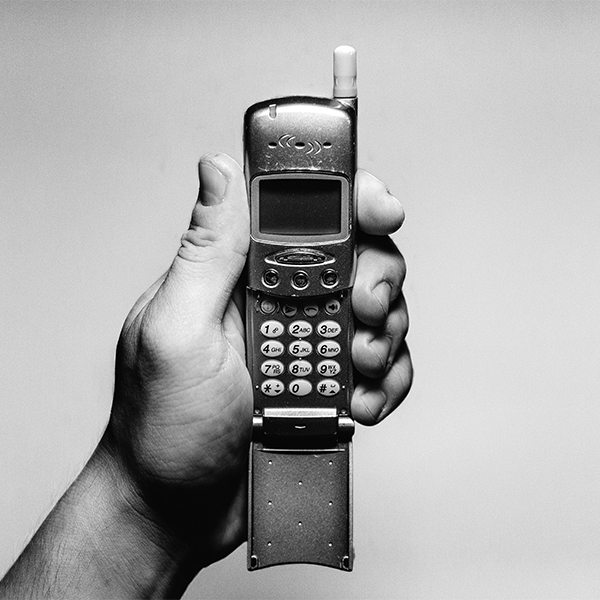 What About Cell Phones?
What About Cell Phones?
Ever since cell phones were introduced into our lives, fears have popped up surrounding their potential link with cancer. After all, it’s one thing to spend time passively near EMF-emitting electronics, appliances, and power lines… but another thing entirely to hold an EMF-emitting device right up to our heads every day! Due to these concerns, a number of studies have been launched on the use of cell phones and subsequent cancer risk. The three largest epidemiological studies to date are:
The INTERPHONE study, which studied phone usage and cancer risk (tumors in the head and neck) across thirteen different countries (Australia, Canada, Denmark, Finland, France, Germany, Israel, Italy, Japan, New Zealand, Norway, Sweden, and the United Kingdom). A number of analyses have been published using the data from this study. The main findings were:
- An overall lack of risk for acoustic neuroma, a benign brain tumor, associated with cell phone use (odds ratio of 0.85 for people who had ever been regular mobile phone users developing an acoustic neuroma, which actually implies slight protection although not statistically significant). The only risk increase was seen among the highest decile of use (over 1650 hours of accumulated call time), though the researchers mentioned this group reported implausible values, making the finding inconclusive. Oddly enough, the lowest acoustic neuroma risk was seen in the second-highest decile of cumulative call time (ninth decile), where the odds ratio was only 0.48.
- An overall lack of increased risk for glioma or meningioma, cancerous brain tumors, associated with cell phone use (odds ratio 0.81 and 0.79, respectively, for people who had ever been regular mobile phone users developing these cancers). As with acoustic neuromas, the highest decile of use was associated with a slightly higher risk of glioma and meningioma, but this group also reported highly implausible data, again suggesting the finding might not be reliable.
The Million Women Study, which is a UK-based prospective cohort study of more than one million women aged 50 and over. In the portion of the study looking at cell phone usage, the findings were:
- No increased risk of cancerous brain tumors (glioma or meningioma) for women who were mobile phone users versus those who never used them (risk ratio 1.01). For long-term mobile phone users (10 years or more) compared with non-users, there was no statistically significant risk for glioma (risk ratio 0.78) or meningioma (risk ratio 1.10).
- However, among the longest-time mobile phone users, there was an increased risk of benign acoustic neuroma (risk ratio 2.46).
The Danish Study, which looked at the cancer outcomes for over 358,000 cell phone users in Denmark by linking brain tumor data from the Danish Cancer Registry with billing information from cell phone subscribers (starting in 1982, when cell phones were first introduced in Denmark). The main findings were:
- An overall unchanged or decreased risk for brain and other nervous system cancers, salivary gland cancers, and leukemia (standard incidence ratios of 0.95, 0.72, and 0.97, respectively).
- In a 2011 update, no increased risk of central nervous system cancers, including brain cancer, in people with the longest mobile phone use (13 years or more) (incidence rate ratio of 1.03 for men and 0.91 for women).
However, the Danish Study has been widely criticized for methodological errors and potential bias, and not all researchers agree that its findings are reliable. For example, the study looked only at cell phone subscriptions (not actual usage), and also didn’t include people with corporate subscriptions who might have heavier usage for their job (in fact, corporate users risked getting lumped into the non-user control group due to the study’s design). These issues could potentially dilute any true increase in cancer risk, if one was there. So, even though the Danish Study’s findings are fairly consistent with other large epidemiological studies, it may be worth taking with a grain of salt.
Along with these major studies, smaller epidemiological studies have been conducted on cell phone use and cancer.
The CERENAT study (a case-control study conducted in France) found no significant link between gliomas or meningiomas for people who were regular cell phone users versus non-users, but it did find that people with the heaviest usage had a higher risk of both these cancers (odds ratio of 2.89 and 2.57, respectively, for people who had a lifelong cumulative cell phone use of at least 896 hours).
The CEFALO study (an international case-control study of children and teenagers who were diagnosed with brain cancer) found no relationship between cell phone use and brain cancer risk.
Two studies sponsored by the National Cancer Institute, conducted between 1994 and 1998, found no relationship between cell phone use, acoustic neuroma tumors, gliomas, or meningiomas. But, two case-control studies in Sweden did find that greater cumulative cell phone use was associated with higher glioma risk, and that people who first started using wireless phones before the age of 20 had the highest risk of one form of glioma, called an astrocytoma (odds ratio of 4.9 for mobile phone use and 3.9 for cordless phone use).
Researchers have also looked at changes in glioma incidence over time, with the theory that if cell phones are a significant contributor, we’d expect to see a relationship between cell phone use and glioma occurrence. When we look at global trends, though, glioma rates have mostly held constant since the late 1970s. A small number of countries have seen a rise in a specific type of glioma called glioblastoma, but we would actually expect this to happen… not due to cell phone use, but due to changes in the World Health Organization’s classification system! In the year 2000, the WHO revised the way it defined “glioblastoma” by combining it with a formerly separate category, anaplastic astrocytoma, and then in 2007, widened the category further by adding anaplastic oligoastrocytoma. Under these new definitions, brain cancers previously reported under different categories were now reported as glioblastomas. The fact that global changes in brain cancer incidence have mostly been limited to this category suggest it’s due to definition updates, not to cell phone exposure.
So, what should we take away from the cell phone and cancer research? If there is a legitimate risk increase, it mostly concerns the small proportion of people with the very highest cell phone usage (and as we’ll look at soon, there are measures those people can take to reduce their exposure). And, even then, it’s important to note that the cancers in question are extremely rare to begin with. A 50% risk increase for glioma associated with cell phone use, for example, might sound huge, but the incidence rate for this cancer is only 3 per 100,000 people to begin with—so a 50% increase raises that number from 3 per 100,000 to 4.5 to 100,000 (and again, that’s not even for cell phone use in general, but only for people with extremely high cumulative use!).
There is some concern about high levels of cell phone use that begin very early in life. This is one area where we need more research. In the meantime, young people should consider limiting the time spent in direct phone-to-ear contact by following the tips at the end of this post!
 What About Smartphones?
What About Smartphones?
We should keep in mind that the EMF research conducted in the ‘80s and ‘90s came before the time we were glued to our smartphones all day long (ahhh, those were the days!). Even between the years 2000 and 2014, cell phone use nearly tripled in the United States (from 110 million to 328 million users), and the length and number of calls has been going up as well. As a consequence, that earlier research may not capture the same effects of holding an EMF-emitting device right up against our heads, in our pockets, and in our hands for hours each day. How do we know we’re not putting ourselves at risk?
Unfortunately, this is a question we can’t fully answer yet. The fact that so many of us text rather than making phone calls could actually be a plus for safety, since texting keeps phones further away from our organs (and remember, EMF levels decrease rapidly the farther we move away from the emission source!).
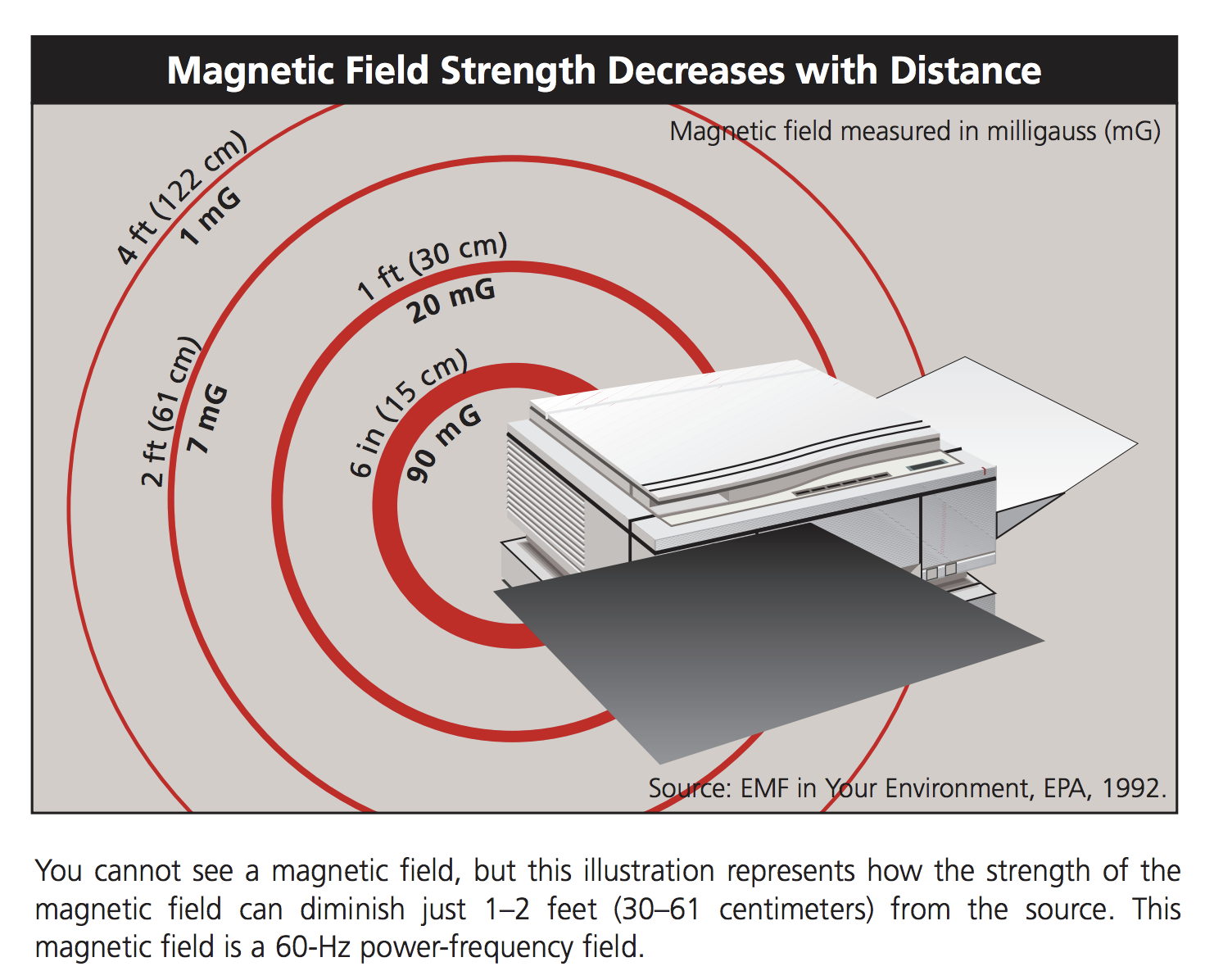
Likewise, the EMFs emitted from analog cell phones from decades ago was actually a different frequency and higher power than the digital cell phones we use today, so overall risk may be even lower for our modern devices. Because of their relatively recent addition to our lives, though (the iPhone has only been out since 2007!), and because children are growing up with smartphones nearly from the time they leave the crib, it may be a number of years before we fully understand the long-term consequences of our modern smartphone habits beyond social isolation and internet addiction.
W hy is the Research So Contradictory?
hy is the Research So Contradictory?
As we look at EMF studies, we might start to wonder: how could research produce such different results on the same topic?! When it comes to EMFs, there are a few explanations. For one, collecting information on EMF exposure can be difficult, and the easiest collection methods tend to be the least reliable. Many studies use self-reported data (for example, asking people to remember how often they talked on the cell phone during the past few months or years), which is notoriously prone to error (thanks to our limited memories and difficulty in being objective about our own habits!). Recall bias can be another problem in retrospective studies (where people who’ve developed a disease are asked to recall their previous habits), since we have a natural tendency to look for cause-and-effect in our lives, and therefore may be more likely to remember events in a way that would explain our current outcome (for example, people with brain tumors on one side of their head may selectively remember using their cell phones on that side more often, even if that wasn’t actually the case). Another issue is participation bias, where people who’ve developed a disease may be more likely to enroll in research studies than healthy volunteers for a control group, thus skewing the pool of available participants and potentially influencing study outcomes. And, people with diseases likely to cause memory damage or communication impairment (like certain brain cancers) may be unable to accurately report their previous habits, making it hard to get reliable EMF data to use in analyses. This is a particularly big problem with cell phone and brain cancer studies, because the most common brain cancer (gliomas) tends to have a very short survival period after diagnosis (a 5-year relative survival of about 5%). For researchers attempting to clarify a potential link between cell phone use and this cancer, interviewing survivors is therefore difficult.
On top of all that, in the decades since EMF research first began, our available electronics and levels of exposure have dramatically changed. Today, the types of computers, cell phones, and other digital technology we use are a far cry from what we had in the 1980s and 1990s. Even areas of body exposure are different (for example, laptops or tablets we place on our lap didn’t exist in the ‘80s, and we didn’t use early mobile phones in our hands for texting!). So, the time period from which data was collected could play a role in the contradictory findings we see in studies.
 What About the “Scary” EMF Studies?
What About the “Scary” EMF Studies?
The public tends to have a lopsided view about EMF research due to the types of studies that the media chooses to promote. For every scary study about EMFs and cancer, many many more exist that don’t find any association at all. But, the media isn’t going to broadcast studies that aren’t exciting in some way (who would spend time reading that?)! So, what we hear about are the most extreme and fear-inspiring findings, and not the vast body of evidence showing we shouldn’t be worried.
For example, there was recently a media flurry when the California Department of Public Health released guidelines for reducing EMF exposure from cell phones. This was taken as evidence that cell phones (or EMF in general) are confirmed as harmful. However, the CDPH stated only that “the science is still evolving,” and that taking easy measures to reduce EMF exposure is part of a better-safe-than-sorry approach… a much different story than the media gave us!
Likewise, in February 2018, a highly publicized rodent study was published showing that EMF exposure caused tumors in male (but not female) rats. The study was long (10 years), expensive ($25 million!), and conducted by the National Toxicology Program, which made its findings carry even more weight. Based on this, many media outlets reported that there’s “clear evidence” that cell phones can cause cancer (you may have seen some of the headlines yourself!). However, the fine print that many people didn’t see was that the rodents were exposed to levels of EMF higher than what even the most frequent cell phone users experience, and their entire bodies were exposed to those levels. Not only that, but the researchers couldn’t rule out that the findings were due to some other component of the experiment rather than the radiation exposure; they considered most of the findings “equivocal.”
So, when we’re looking at EMF headlines popping up on Facebook, Twitter, news sites, and other forms of social or news media, we should keep in mind that these aren’t representative of the entire body of EMF research. And, we shouldn’t confuse precautionary advice with confirmation that EMFs are harmful. The evidence just isn’t conclusive enough to make that claim!
Is EMF Hypersensitivity Real?
Along with potential long-term effects of EMFs, some people believe a more acute reaction to EMFs can occur in the form of electromagnetic hypersensitivity. Although it’s not an officially recognized medical disorder, EMF hypersensitivity is said to consist of symptoms such as headaches, sleep issues, chronic fatigue, nausea, joint pain, rashes, trouble concentrating, memory problems, heart palpitations, digestive disturbances, and more. In some cases, the symptoms are mild; in others, they’re so debilitating that they prevent individuals from successfully going to work or functioning autonomously at home.
 However, research on this phenomenon have failed to link actual EMF exposure to the reported hypersensitivity symptoms. Controlled, double-blind studies (where neither the participants nor the researchers know when EMF exposure is occurring and when it isn’t) have shown that people suffering from purported EMF hypersensitivity generally can’t detect when EMFs are actually present in their environment. But, that doesn’t mean the disorder is entirely psychosomatic! Other environmental factors such as flickering from fluorescent lights, glares from lights on screens, poor ergonomic design of workstations, poor air quality, workplace stress, or stress in the home life could all be contributing to perceived EMF hypersensitivity.
However, research on this phenomenon have failed to link actual EMF exposure to the reported hypersensitivity symptoms. Controlled, double-blind studies (where neither the participants nor the researchers know when EMF exposure is occurring and when it isn’t) have shown that people suffering from purported EMF hypersensitivity generally can’t detect when EMFs are actually present in their environment. But, that doesn’t mean the disorder is entirely psychosomatic! Other environmental factors such as flickering from fluorescent lights, glares from lights on screens, poor ergonomic design of workstations, poor air quality, workplace stress, or stress in the home life could all be contributing to perceived EMF hypersensitivity.
And for the rest of us, even those of us who don’t identify as EMF-hypersensitive? It’s very, very possible that EMF-emitting devices could be causing unpleasant symptoms… just not through the EMFs themselves! For example, if we sleep with our phone within reach by our bed, we risk late-night blue light exposure (if we’re checking our email right before sleep), as well as sleep interruption (if we get a call or text message and our phone isn’t on silent). The sounds of electronics running in the background could be irritating to some people, and the general habit of constantly checking email, phone messages, Facebook, and other forms of communication can distract us from living in the present moment (hence why meditation and meditative activities can be such an important counterbalance to modern life!).
What About EMF Shields?
As a result of EMF fears, many products have entered the market claiming to block our EMF exposure and reduce our risk of associated diseases (whether or not those disease risks are real!). These include cell phone shields, clothing, pendants, pads for laptops, radiation cages, encasements for beds, and more. Unfortunately, most of these products haven’t been scientifically tested, and we have no way of knowing whether we can trust the manufacturers’ statements (which often amount to technical-sounding gibberish that doesn’t actually say anything substantial). Even worse, some products that claim to block EMFs can actually increase EMF exposure. For example, phone shields can interfere with the phone’s signal, causing it to use even more power in order to communicate with the base station, resulting in higher EMF emissions than if the phone wasn’t “shielded” at all! In other words, it’s unlikely that any of these products are worth the expense. Don’t waste your money!
What Can We Do to Stay Safe?
 There’s little evidence to suggest that removing all exposure to manmade EMFs, going out of our way to avoid electronics, throwing away our cell phones, or wrapping ourselves in tinfoil will truly improve our health!
There’s little evidence to suggest that removing all exposure to manmade EMFs, going out of our way to avoid electronics, throwing away our cell phones, or wrapping ourselves in tinfoil will truly improve our health!
That being said, the increased rate of brain cancer in heavy cell phone users does point to a few easy safety precautions that we can all benefit from.
- Whenever possible, use a headset, earbuds, car Bluetooth, or speakerphone while making calls, instead of holding the phone directly to your head. This is a particularly good idea if you have a job or lifestyle that’s heavily reliant on phone calls!
- Don’t sleep with your phone under your pillow. The evidence says your phone is fine on your bedside table, but make sure it’s set to Do Not Disturb overnight and avoid using it without a blue light filter right before bed.
- Avoid using your cell phone when the signal is weak (this increases EMF emissions, because the phone has to work harder to communicate with the base station!). If you must make a call with a weak signal, definitely use a headset!
- Eat a nutrient-dense diet high in antioxidants! Interestingly, some studies have suggested that antioxidants (such as resveratrol found in grapes and red wine) can actually offset the biological effects of EMFs found in people with high occupational exposure (such as those working on high-voltage electricity lines). Could this also benefit people with lower levels of EMF exposure? We can’t say for sure, but there’s no harm (and plenty of benefit) in striving for nutrient density in our food! (See: The Importance of Nutrient Density. and The Amazing World of Plant Phytochemicals: Why a diet rich in veggies is so important!)
Citations
Aydin D, et al. “Mobile phone use and brain tumors in children and adolescents: a multicenter case-control study.” Journal of the National Cancer Institute 2011;103(16):1264–1276.
Banaceur S, et al. “Whole body exposure to 2.4 GHz WIFI signals: effects on cognitive impairment in adult triple transgenic mouse models of Alzheimer’s disease (3xTg-AD).” Behav Brain Res. 2013 Mar 1;240:197-201. doi: 10.1016/j.bbr.2012.11.021. Epub 2012 Nov 27.
Cardis E, et al. “Risk of brain tumours in relation to estimated RF dose from mobile phones: results from five Interphone countries.” Occup Environ Med. 2011 Sep;68(9):631-40. doi: 10.1136/oemed-2011-100155. Epub 2011 Jun 9.
Coureau G, et al. “Mobile phone use and brain tumours in the CERENAT case-control study.” Occupational and Environmental Medicine 2014;71(7):514-522.
Deltour I, et al. “Time trends in brain tumor incidence rates in Denmark, Finland, Norway, and Sweden, 1974-2003.” Journal of the National Cancer Institute 2009;101(24):1721–1724.
Deltour I, et al. “Mobile phone use and incidence of glioma in the Nordic countries 1979-2008: consistency check.” Epidemiology 2012;23(2):301–307.
Fam WZ & Mikhail EL. “Lymphoma induced in mice chronically exposed to very strong low-frequency electromagnetic field.” Cancer Lett. 1996 Aug 2;105(2):257-69.
Frei P, et al. “Use of mobile phones and risk of brain tumours: update of Danish cohort study.” BMJ. 2011 Oct 19;343:d6387. doi: 10.1136/bmj.d6387.
Greenland S, et al. “A pooled analysis of magnetic fields, wire codes, and childhood leukemia.” Childhood Leukemia-EMF Study Group. Epidemiology 2000;11(6):624-634.
Halgamuge MN. “Pineal melatonin level disruption in humans due to electromagnetic fields and ICNIRP limits.” Radiat Prot Dosimetry. 2013 May;154(4):405-16. doi: 10.1093/rpd/ncs255. Epub 2012 Oct 10.
Hardell L, et al. “Pooled analysis of case-control studies on malignant brain tumours and the use of mobile and cordless phones including living and deceased subjects.” International Journal of Oncology 2011;38(5):1465–1474.
Hug K, et al. “Parental occupational exposure to extremely low frequency magnetic fields and childhood cancer: a German case-control study.” Am J Epidemiol. 2010 Jan 1;171(1):27-35. doi: 10.1093/aje/kwp339. Epub 2009 Nov 25.
Infante-Rivard C & Deadman JE. “Maternal occupational exposure to extremely low frequency magnetic fields during pregnancy and childhood leukemia.” Epidemiology 2003;14(4):437-441.
Inskip PD, et al. “Cellular-telephone use and brain tumors.” New England Journal of Medicine 2001;344(2):79-86.
Inskip PD, et al. “Brain cancer incidence trends in relation to cellular telephone use in the United States.” Neuro-Oncology 2010;12(11):1147–1151.
INTERPHONE Study Group. “Acoustic neuroma risk in relation to mobile telephone use: results of the INTERPHONE international case-control study.” Cancer Epidemiol. 2011 Oct;35(5):453-64. doi: 10.1016/j.canep.2011.05.012. Epub 2011 Aug 23.
INTERPHONE Study Group. “Brain tumour risk in relation to mobile telephone use: results of the INTERPHONE international case-control study.” Int J Epidemiol. 2010 Jun;39(3):675-94. doi: 10.1093/ije/dyq079. Epub 2010 May 17.
Johansen C, et al. “Cellular telephones and cancer: a nationwide cohort study in Denmark.” Journal of the National Cancer Institute 2001;93(3):203–207.
Kliukiene J, et al. “Residential and occupational exposures to 50-Hz magnetic fields and breast cancer in women: a population-based study.” Am J Epidemiol. 2004 May 1;159(9):852-61.
Korr H, et al. “No evidence of persisting unrepaired nuclear DNA single strand breaks in distinct types of cells in the brain, kidney, and liver of adult mice after continuous eight-week 50 Hz magnetic field exposure with flux density of 0.1 mT or 1.0 mT.” PLoS One. 2014 Oct 10;9(10):e109774. doi: 10.1371/journal.pone.0109774. eCollection 2014.
Lagroye I, et al. “ELF magnetic fields: animal studies, mechanisms of action.” Prog Biophys Mol Biol. 2011 Dec;107(3):369-73. doi: 10.1016/j.pbiomolbio.2011.09.003. Epub 2011 Sep 8.
Lai H & Singh NP. “Acute exposure to a 60 Hz magnetic field increases DNA strand breaks in rat brain cells.” Bioelectromagnetics. 1997;18(2):156-65.
Little MP, et al. “Mobile phone use and glioma risk: comparison of epidemiological study results with incidence trends in the United States.” British Medical Journal 2012;344:e1147.
London SJ, et al. “Residential magnetic field exposure and breast cancer risk: A nested case–control study from a multiethnic cohort in Los Angeles County, California.” American Journal of Epidemiology 2003;158(10):969-980.
Lönn S, et al. “Long-term mobile phone use and brain tumor risk.” American Journal of Epidemiology 2005;161(6):526–535.
Muscat JE, et al. “Handheld cellular telephone use and risk of brain cancer.” JAMA 2000;284(23):3001–3007.
Nishimura I, et al. “Acute and subchronic toxicity of 20 kHz and 60 kHz magnetic fields in rats.” J Appl Toxicol. 2016 Feb;36(2):199-210.
Ostrom QT, et al. “The epidemiology of glioma in adults: a “state of the science review.” Neuro Oncol. 2014 Jul;16(7):896-913.
Philips A & Lamburn G. “Updated study contains poor science and should be disregarded.” BMJ. 2011 Dec 6;343:d7899; author reply d7912. doi:10.1136/bmj.d7899.
Qi G, et al. “Effects of extremely low-frequency electromagnetic fields (ELF-EMF) exposure on B6C3F1 mice.” Environ Health Prev Med. 2015 Jul;20(4):287-93. doi: 10.1007/s12199-015-0463-5. Epub 2015 May 5.
Rubin GJ, et al. “Electromagnetic hypersensitivity: a systematic review of provocation studies.” Psychosom Med. 2005 Mar-Apr;67(2):224-32.
Schoenfeld ER, et al. “Electromagnetic fields and breast cancer on Long Island: A case–control study.” American Journal of Epidemiology 2003;158(1):47-58.
Seitz H, et al. “Electromagnetic hypersensitivity (EHS) and subjective health complaints associated with electromagnetic fields of mobile phone communication–a literature review published between 2000 and 2004.” Sci Total Environ. 2005 Oct 15;349(1-3):45-55. Epub 2005 Jun 21.
Sienkiewicz Z, et al. “Are Exposures to Multiple Frequencies the Key to Future Radiofrequency Research?” Front Public Health. 2017 Dec 8;5:328. doi: 10.3389/fpubh.2017.00328. eCollection 2017.
Veyret B. “Review of Animal Studies.” World Health Organization: Seoul Meeting. Accessed April 3, 2018.
Zhang D, et al. “Resveratrol may reverse the effects of long-term occupational exposure to electromagnetic fields on workers of a power plant.” Oncotarget. 2017 Jul 18;8(29):47497-47506. doi: 10.18632/oncotarget.17668.

